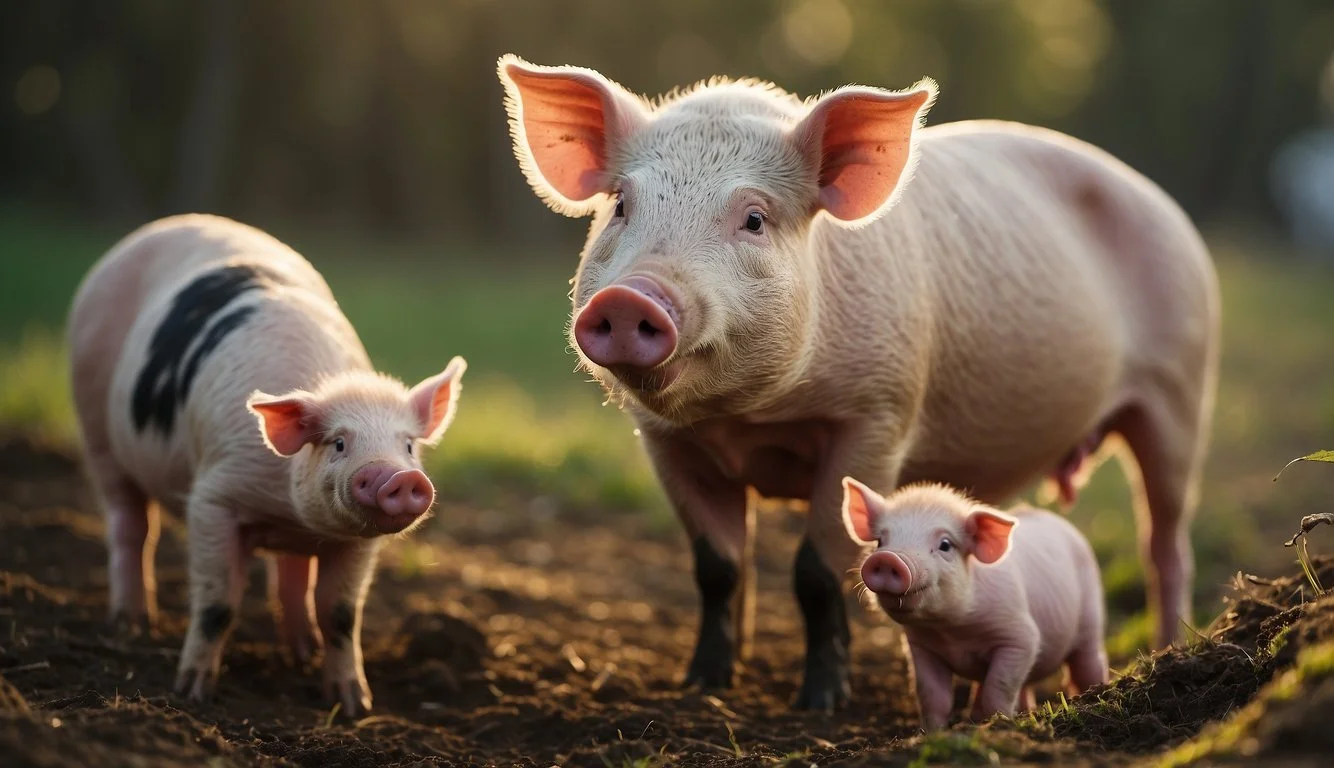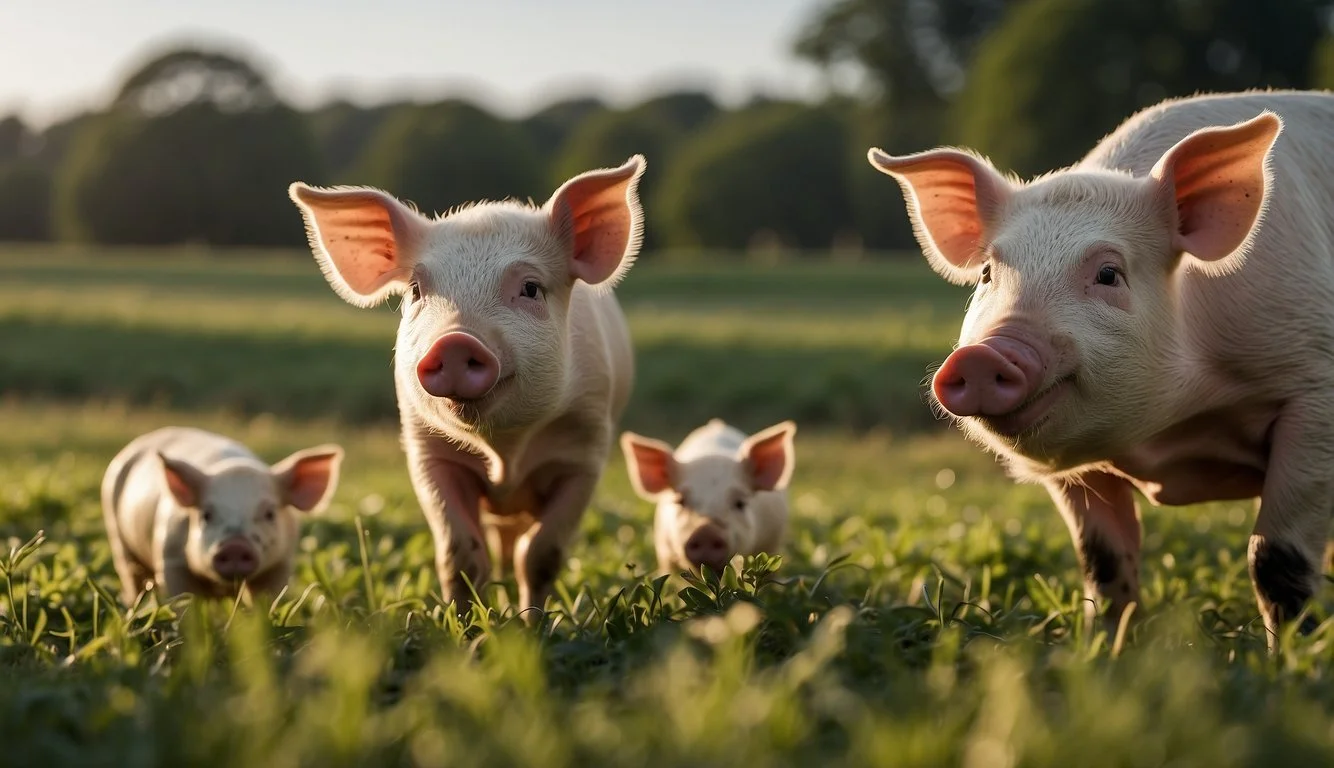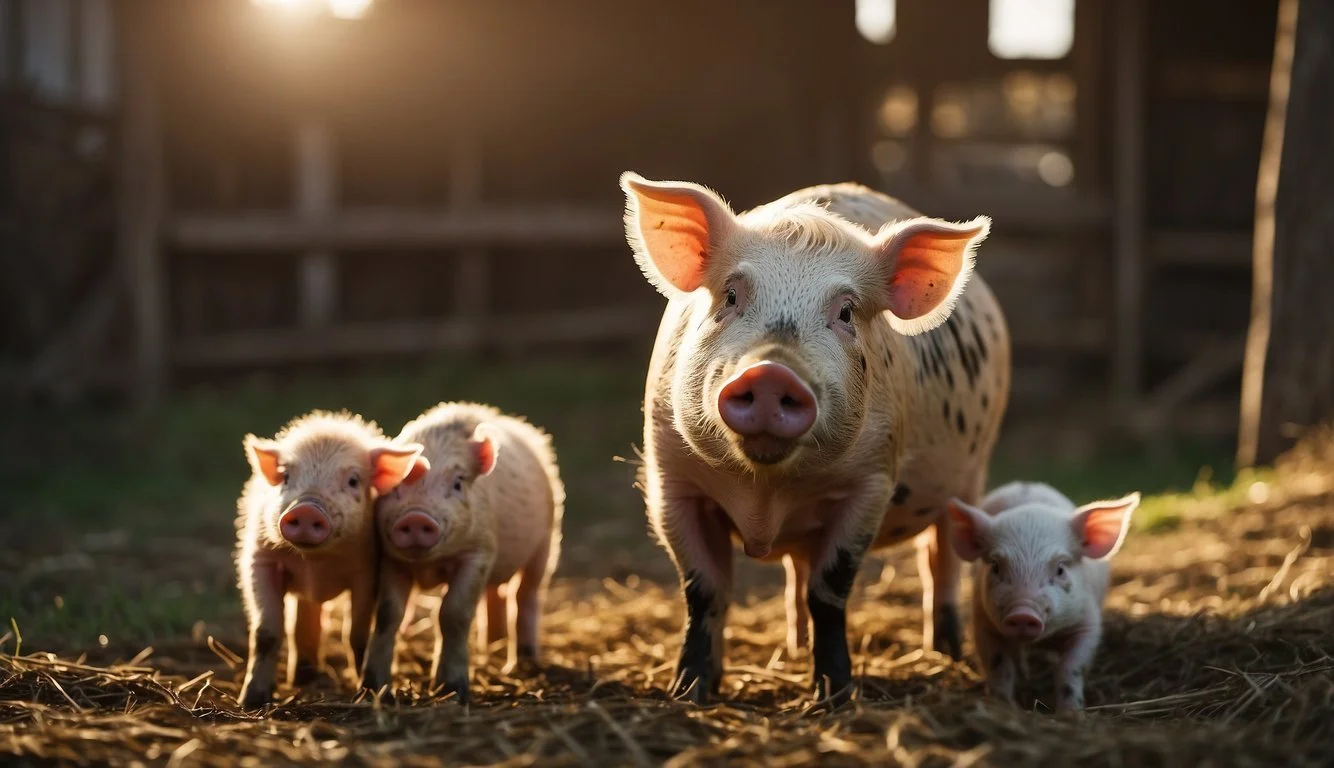Documentary Review: Gunda (2020)
A Captivating Animal Portrait
Gunda (2020) offers an intimate and unfiltered look into the life of a pig, presenting a documentary devoid of dialogue that immerses viewers in the world of farm animals. Directed by Victor Kossakovsky, this black-and-white film captures the nuances of animal behavior, focusing on Gunda, an expressive sow, and her piglets as they navigate their daily lives.
Through its unique perspective, the film challenges viewers to consider the lives of farm animals in a new light. The visual storytelling is powerful, relying solely on imagery to convey emotion and narrative, making for an engaging and thought-provoking experience.
Experiencing Gunda's world through a pig's-eye view delivers a profound commentary on nature and existence, encouraging a deeper reflection on how humans interact with and perceive animals. This approach sets "Gunda" apart from other documentaries, making it a significant contribution to both cinematic and ethical discussions.
Overview of 'Gunda'
Gunda is a 2020 documentary directed by Victor Kossakovsky. The film offers a minimalist, yet captivating, look at the lives of farm animals, particularly focusing on a pig named Gunda. Without a musical score or voice-over narration, the film relies on its black-and-white cinematography to draw viewers into Gunda's world.
The documentary begins with a serene shot of a pigsty, setting the tone for the intimate portrayal of Gunda and her piglets. The story unfolds at a Norwegian farmstead, where Gunda gives birth to a litter of piglets. The scenes highlight the daily life and maternal instincts of the sow.
Key Elements:
Cinematography: Shot in striking black-and-white, the film captures the raw beauty of farm life. Every detail is meticulously framed, allowing the audience to appreciate the simplicity and complexity of the animals' lives.
Approach: Kossakovsky's decision to omit a traditional score and narration places emphasis on the natural sounds and activities within the farm, creating a more authentic experience.
Perspective: The film offers a unique "pig's-eye view," emphasizing perspectives rarely considered by audiences. This angle invites viewers to empathize with Gunda and her companions.
The absence of dialogue and human presence shifts focus entirely onto the animals, making their interactions and environments the centerpiece of the narrative. This minimalist approach is both a strength and a challenge, requiring viewers to engage more deeply with the film’s visual storytelling.
Director's Vision and Style
Victor Kossakovsky's "Gunda" offers viewers a mesmerizing experience, emphasizing the silent strength and daily lives of farm animals through innovative filmmaking techniques and a distinctive aesthetic approach.
Victor Kossakovsky's Filmmaking Approach
Victor Kossakovsky is known for his humanistic lens and profound storytelling. In "Gunda," he consciously avoids anthropomorphizing the animals, allowing their natural behaviors to communicate silently. This dialogue-free approach underscores the raw and unfiltered essence of their lives.
Kossakovsky focuses on subtle, observational filmmaking. By capturing routine moments—like a pig tending to her piglets or a cow grazing in the field—he immerses the audience in the animals’ world. His aim is to evoke empathy and reflection without imposing human emotion or narrative onto the animals.
Cinematic Techniques and Aesthetics
The film's visual and auditory choices are significant. Shot in high-contrast black and white, "Gunda" uses sharp, textured imagery to create a timeless feel. The monochromatic palette removes distractions and directs focus onto each animal's form and movement.
The close-up shots and low camera angles present a unique perspective, making the audience feel as though they are seeing the world through the animals’ eyes. This dramatic choice enhances the emotional impact and visual intimacy of the scenes.
The sound design is minimal yet powerful. Organic farm noises—rustling hay, soft grunts, distant clucking—replace any musical score, creating an immersive soundscape. This attention to auditory detail complements the visual storytelling, emphasizing the simplicity and intensity of life on the farm.
Together, these techniques illustrate Kossakovsky’s dedication to portraying the subjects with dignity and respect, transforming mundane moments into a profound cinematic experience.
Themes and Motifs
The documentary "Gunda" directed by Victor Kossakovsky uses stark black and white visuals and minimalistic storytelling to delve deeply into profound themes such as animal consciousness and motherhood. These themes are presented through the daily life of a sow named Gunda and her piglets, offering a unique perspective on their experiences.
Concept of Animal Consciousness
In "Gunda," the audience is invited to reconsider the consciousness and emotional lives of farm animals. Through close-up shots and prolonged sequences, the film captures Gunda's behaviors that suggest complex feelings and thoughts. Gunda's interactions with her piglets are portrayed with a level of intimacy that challenges traditional views of animals as mere commodities.
The decision to avoid voice-over narration and music underscores the raw reality of the animal's world, forcing viewers to engage more deeply with the visuals and actions on screen. This absence of human interpretation permits a purer reflection of animal life. Such a portrayal advocates for recognizing animals' capacity for emotion and intelligence, highlighting their intrinsic value.
Exploration of Motherhood
Motherhood is another central theme, epitomized through Gunda's care for her newborn piglets. From the first moments of their birth, the documentary meticulously shows the bonding process, focusing on their dependence on Gunda for nourishment and protection.
Scenes displaying the initial bonding, feeding, and nurturing rituals convey the tender and instinctive nature of maternal love in animals. The film’s minimalist approach allows these moments to speak for themselves, leaving a powerful impression on the audience.
Interestingly, by highlighting the cyclic nature of life through the lens of a mother sow and her litter, the documentary subtly comments on broader natural processes and the often-overlooked sacrifices made by animals, urging viewers to reevaluate the common perceptions of animal welfare.
Technical Aspects
The documentary "Gunda" is notable for its striking black-and-white visuals, nuanced sound design, and meticulous camera work, creating an immersive experience for viewers.
Black and White Visuals
"Gunda" uses stark black-and-white cinematography to draw focus to the textures and forms of the animals and their surroundings. This choice enhances the raw and naturalistic appearance of the scenes. The high contrast between light and shadow emphasizes the physicality of the subjects, creating a dramatic and intimate portrayal. By forgoing color, the film invites viewers to engage more deeply with the shapes, movements, and expressions of the animals, making their experiences more palpable.
Sound Design and Silence
The sound design in "Gunda" intricately complements the visual narrative, emphasizing the ambient sounds of the farm. The use of natural soundscapes, from the rustling of hay to the snorts of pigs, establishes an authentic atmosphere. Significantly, the film is devoid of a musical score or narration, placing the viewer within the natural sound environment of the animals. This deliberate silence underscores the daily lives and struggles of the animals, adding a layer of realism that enhances the meditative and reflective quality of the documentary.
Camera Work and Composition
Camera work in "Gunda" is marked by its deliberate and respectful approach. The use of long takes and minimal camera movements create a sense of continuity and presence, making viewers feel as though they are observing the animals in real time. The composition often frames the animals in close-ups, capturing intricate details such as the texture of their skin and the subtlety of their expressions. Wide shots are employed to contextualize the animals within their environment, highlighting their interactions with their surroundings. The camera's unobtrusive presence ensures that the portrayal of the animals remains authentic and undisturbed by human interference.
Cast and Performances
The documentary "Gunda" (2020) offers a rare glimpse into the lives of farm animals, presented without any human voice-over or musical score. This approach allows viewers to focus purely on the natural behaviors and interactions of the animals featured.
Non-human Cast
"Gunda" centers on a few key animal characters: Gunda, a mother pig; a flock of chickens; and a small herd of cows. Unlike traditional films, there are no human actors, and the narrative is driven solely by the animals' daily activities.
Gunda the Pig: She is the primary focus, and her maternal instincts and interactions with her piglets form the core of the documentary.
Chickens: The film highlights a one-legged chicken, emphasizing resilience and adaptation.
Cows: Their pastoral life provides a serene contrast to Gunda's more intimate family moments.
This non-human cast delivers a compelling and authentic portrayal of animal life, free from anthropomorphism.
Natural Behavior as 'Acting'
Victor Kossakovsky's direction captures the animals' authentic behaviors, effectively turning them into natural performers.
Intimate Cinematography: Close-up shots and long takes immerse viewers in the animals' perspective. The absence of artificial elements like music or narration ensures that their natural actions serve as the narrative.
Unscripted Interactions: The unscripted setting strips away any artificiality, presenting the genuine rhythms of farm life.
By focusing on true-to-life actions and reactions, the documentary emphasizes the individuality and intrinsic value of its subjects, inviting viewers to see them in a new light.
Critical Reception and Reviews
"Gunda," directed by Viktor Kossakovsky, has garnered significant praise from critics and audiences alike. The documentary captivates with its focus on animal perspectives and has sparked intriguing discussions on veganism.
Acclaim and Acknowledgments
Critics have widely acclaimed "Gunda" for its pioneering filmmaking approach. Viktor Kossakovsky’s choice to shoot in black-and-white and to forgo dialogue stands out. It provides a raw, immersive experience into the lives of farm animals.
Rotten Tomatoes shows a high Tomatometer rating of 98%, based on 93 reviews. This reflects widespread critical approval. The Hollywood Reporter highlighted the film's unique narrative style and its capacity to evoke empathy without spoken words.
The documentary has been praised at several film festivals, notably Berlin 2020, where it left a strong impression. Reviewers consistently commend its ability to present a compelling argument for veganism through the sheer power of visual storytelling.
Public and Critical Response
The audience reception, while slightly more mixed than critical responses, has been largely favorable. With a Rotten Tomatoes Audience Score of 70%, viewers appreciate the film's contemplative pace and inventive perspective.
Many audience reviews acknowledge the emotional connection formed with the animals, particularly the sow, Gunda. This emotional resonance is often cited as a key highlight.
Forums and social media reflect an engaging dialogue around the themes presented in "Gunda." Despite some noting the documentary's slow pace, the film’s immersive depiction often leaves a lasting impact.
Cultural and Social Impact
"Gunda" has significantly influenced discussions about animal rights and documentary filmmaking. It offers a profound perspective on these topics, encouraging viewers to reconsider their views on animals and the art of documentary storytelling.
Conversations on Animal Rights
The documentary "Gunda," directed by Viktor Kossakovsky, presents a unique and compelling insight into animal consciousness. By focusing on the everyday life of a pig and her piglets, it challenges viewers to see animals as sentient beings rather than commodities.
Activists and animal rights organizations have praised the film for its ability to foster empathy. Its detailed, non-narrative portrayal of animals in their natural environment illuminates the complexities and emotions in their lives. This approach has sparked conversations about the ethical implications of animal farming practices and the treatment of animals globally.
Influence on Documentary Filmmaking
"Gunda" has also made a notable impact on documentary filmmaking. Shot in high-contrast black and white, the film emphasizes the aesthetic and technical aspects of storytelling. Its cinematography, spearheaded by Kossakovsky and Egil Håskjold Larsen, elevates the visual narrative through stark imagery and intimate perspectives.
The film's lack of dialogue or narration allows viewers to immerse themselves fully in the visual storytelling. This minimalist style has influenced other filmmakers to experiment with similar techniques, pushing the boundaries of how stories can be told. Consequently, "Gunda" stands as a pioneering example of how documentary films can evoke powerful emotional responses without traditional narrative elements.
Comparisons to Other Works
Gunda stands out in the realm of nature documentaries by eschewing traditional elements. The absence of a dramatic score and narration sets it apart from films like March of the Penguins. The minimalist approach favors intimate connections with the animals.
Gunda's black-and-white cinematography evokes memories of Baraka's visual grandeur. Unlike Baraka, which relies on color to capture diverse landscapes, Gunda's monochrome palette focuses attention on the subtleties of animal behavior.
The film shares emotional depth with My Octopus Teacher. Both films offer an unvarnished look at animal lives, invoking empathy without anthropomorphizing them. Gunda, however, skips the human interaction, letting viewers immerse themselves purely in the animal world.
In comparison to Planet Earth, Gunda's focus remains narrow. While Planet Earth showcases a broad array of natural wonders and habitats, Gunda offers a concentrated study of a single pig's experience, providing a deeper, narrower insight.
The choice of setting in a Norwegian farm rather than exotic locales as seen in The Cove shifts the perspective to something more everyday and relatable. This choice underscores the universal aspects of animal life.
Finally, Gunda's method of storytelling aligns with the approach in Kedi, a documentary that follows street cats in Istanbul. Both films forego human voices, presenting animal behavior as a central narrative force. This choice encourages viewers to observe and interpret the natural world directly.
Conclusion
"Gunda" provides a unique pig's-eye perspective on life, filmed in stunning high-contrast black and white.
Directed by Viktor Kossakovsky and featuring Joaquin Phoenix as executive producer, the film captures the daily existence of a sow named Gunda and her piglets on a Norwegian farm.
The cinematography, shared by Kossakovsky and Egil Håskjold Larsen, emphasizes the intricate textures of farm life.
Simple, yet impactful images show Gunda plowing her snout into the earth and interacting with her piglets.
The lack of narration or musical score allows viewers to immerse fully in the visuals and natural sounds.
"Gunda" succeeds in portraying the animals' emotions and relationships. The director's choice to film in black and white contributes to the stark, poignant beauty of the documentary.
The painstaking attention to detail and deliberate pacing demand viewers' full attention, inviting them to observe the dignity and life of animals often overlooked.
Through minimalistic storytelling, "Gunda" raises subtle yet powerful questions about the human-animal relationship.
The documentary stands out for its artistic vision and commitment to showing life from an animal's perspective without anthropomorphizing the subjects.
With its minimalist approach, "Gunda" remains a testament to thoughtful and profound documentary filmmaking.





